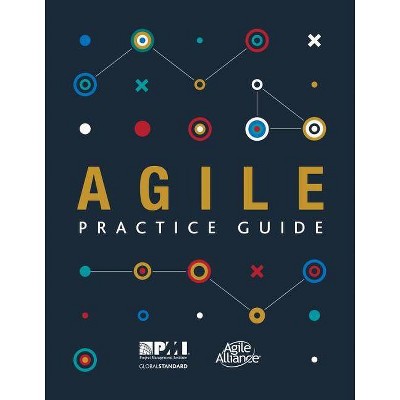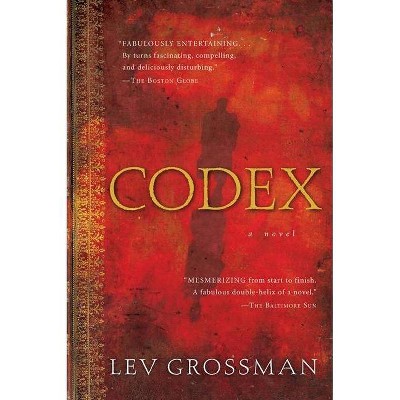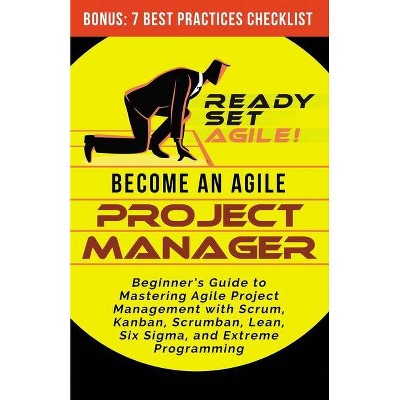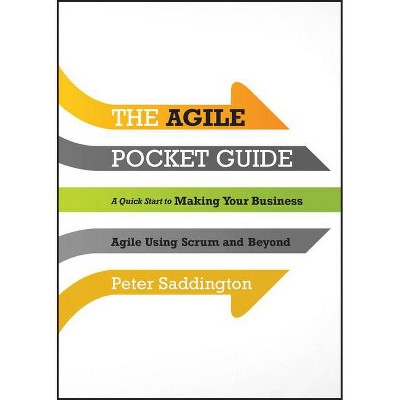The Agile Codex - by Michael McCormick (Paperback)
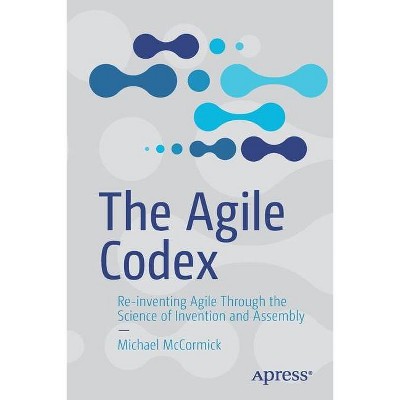
Similar Products
Products of same category from the store
AllProduct info
<p/><br></br><p><b> Book Synopsis </b></p></br></br><p>Apply the industrial engineering science of invention and assembly to how software is described, planned, and built, thus allowing you to be free to flex your practices according to your needs, putting principle over habit and rules.</p> <p>Reading about Agile practices is like reading diet advice. Everything sounds unique and good; everything starts with good intentions. Then reality sets in. Organizations adapt their practices, but lose sight of grounding principles. A bias toward ceremonies, metrics, and recipes comes at the expense of efficiently getting the real work done. Managers and developers are incentivized to game the system. Organizational metrics become detached from the reality of what is being delivered and how.</p> <p><i>The Agile Codex</i> shows you how to describe a software project as an acyclic dependency tree of sized work items, scoped to be operated on by one software engineer each and completed within a week. It covers how to optimally sequence and assign these work items to bring calendar time for delivery as close to effort time as possible. You'll see the value of doing this as it applies to optimally planning and adjusting software projects in the face of learning and change. Finally, the book covers the collaborative agile principles required to bring this skill set and practice to a software team.</p> <p>Throughout the book you'll be reminded that software engineering is not a rote task - it is primarily a skilled, creative act. As such, you'll see that we need to account for the space needed to research, plan, create, and adjust. The Agile practices serving the codex deal with this intersection between the engineering problem of software delivery flow, and the human reality of how work is described, owned, executed, and transitioned from one state to another.</p> <p>Everything an agile team does must serve the codex. The creation and the care and feeding of this structured tree of work sets the frame in which all other team actions take place and against which all successes or failures can be evaluated. </p> <p><b>What You Will Learn </b></p> <p><ul><li>Understand the benefits of collaboration on team cohesion, resilience to change, and efficient mitigation of risk</li><li>Teach teams to follow the practices, become strong collaborators, modify the practices while staying true to the principles, and more predictably deliver software while minimizing risk </li><li>Optimally sequence and assign work items to bring calendar time for delivery as close to effort time as possible</li></ul></p> <p><b>Who This Book is For</b> </p> People who manage the planning and delivery of software. <br><p/><br></br><p><b> From the Back Cover </b></p></br></br><p>Apply the industrial engineering science of invention and assembly to how software is described, planned, and built, thus allowing you to be free to flex your practices according to your needs, putting principle over habit and rules.</p> <p>Reading about Agile practices is like reading diet advice. Everything sounds unique and good; everything starts with good intentions. Then reality sets in. Organizations adapt their practices, but lose sight of grounding principles. A bias toward ceremonies, metrics, and recipes comes at the expense of efficiently getting the real work done. Managers and developers are incentivized to game the system. Organizational metrics become detached from the reality of what is being delivered and how.</p> <p><i>The Agile Codex</i> shows you how to describe a software project as an acyclic dependency tree of sized work items, scoped to be operated on by one software engineer each and completed within a week. It covers how to optimally sequence and assign these work items to bring calendar time for delivery as close to effort time as possible. You'll see the value of doing this as it applies to optimally planning and adjusting software projects in the face of learning and change. Finally, the book covers the collaborative agile principles required to bring this skill set and practice to a software team.</p> <p>Throughout the book you'll be reminded that software engineering is not a rote task - it is primarily a skilled, creative act. As such, you'll see that we need to account for the space needed to research, plan, create, and adjust. The Agile practices serving the codex deal with this intersection between the engineering problem of software delivery flow, and the human reality of how work is described, owned, executed, and transitioned from one state to another.</p> <p>Everything an agile team does must serve the codex. The creation and the care and feeding of this structured tree of work sets the frame in which all other team actions take place and against which all successes or failures can be evaluated.</p><p/><br></br><p><b> About the Author </b></p></br></br>Michael McCormick has 25 years of experience developing and delivering enterprise and consumer software, in both technologist and executive roles. Michael is an industry expert in enterprise and multi-channel systems design and running large-scale development efforts, as sole inventor on two mobile and IoT technology patents and one pending microservices-related patent, and co-inventor on two others.<br>Michael is currently VP Engineering, CTO, Mobile and Connected Devices at Salesforce, and is the founding architect of Salesforce's Philanthropy Cloud. Prior to Salesforce, Michael founded a software consulting company which was acquired by BEA Systems in 2001 followed by 14 years at BEA and Oracle in lead technical and management roles. Through his career he has had the opportunity to work directly with industry luminaries Adam Bosworth, David Sobeski, Nasi Jazayeri, and many others.<br>For fun, Michael has also developed several iOS apps, including Infinite Eye (top 10, iPhone Photography Category, 2011), Euphonia (GPS and audio-based augmented reality field games), and Locus Pocus (crowdsource Bluetooth device tracking system, featured in Venture Beat, 2015).<br>Michael speaks Norwegian, Spanish, French, German, and English pretty well, and Hindi a little, though not necessarily in that order or all at once. He was once a Series 7 securities and state insurance licensed financial planner, and he sometimes writes and performs prog rock music as a guitarist, bassist, and vocalist. <br>Michael McCormick is VP of Engineering at Salesforce.com and CTO of Mobile and Connected Devices at Salesforce.org. Michael holds several engineering patents in mobile, IoT and microservices systems design and wrote a top 10 iPhone app (Photography, 2011). A lover of language, Michael knows English, Spanish, French, German, Norwegian and a little bit of Hindi. A composer of music, he plays classical and electric guitar, bass and piano and he has also been known to sing. With his family, he enjoys playing music, strategy card games, biking, playing outside, traveling, reading out loud and watching 80s movies. Michael values finding the hidden gems, and turning disparate skill sets into creative innovation. You can find more of Michael's writing on Forbes.com.<br>
Price History
Price Archive shows prices from various stores, lets you see history and find the cheapest. There is no actual sale on the website. For all support, inquiry and suggestion messages communication@pricearchive.us



